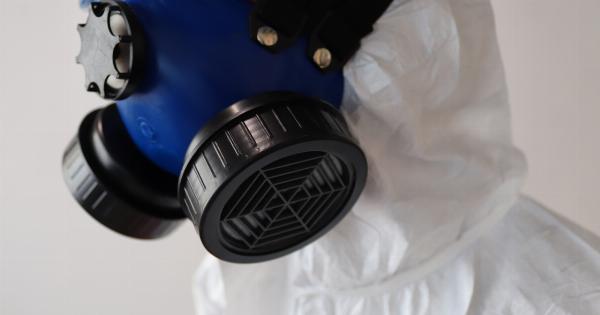Air pollution has been a major concern for the environment and human health for decades. With growing industrialization and urbanization, the issue of air pollution has become even more critical.
It is affecting not only our lungs but also our overall health in various ways. One of the lesser-known impacts of air pollution is its connection with breast cancer. Studies have found a strong link between air pollution and breast cancer development.
What is Breast Cancer?
Breast cancer is a condition where cancerous cells form in the breast tissues. It usually develops in the milk-producing ducts and can spread to other body parts if left untreated.
Breast cancer is among the most common types of cancer globally, and it affects mostly women. The exact cause of breast cancer is yet to be determined, but it is known that various factors, including genetics, lifestyle, and environmental factors, can increase the risk of developing the disease.
What is Air Pollution?
Air pollution is a complex mixture of various harmful substances, including particulate matter, nitrogen oxides, sulfur oxides, carbon dioxide, and others.
These pollutants come from various sources, such as vehicles, industrial activity, power plants, and burning of fossil fuels. These pollutants can have toxic effects on living organisms, including humans.
How Does Air Pollution Cause Breast Cancer?
The exact mechanism of how air pollution causes breast cancer is not yet understood. Still, studies have found that the pollutants present in the air can have various effects on the body that can increase the risk of cancer development.
Air pollution contains carcinogenic compounds, which can cause genetic mutations that lead to the formation of cancer cells.
These carcinogens can also cause oxidative stress and inflammation, which can damage the DNA and cells in the body, leading to the development of cancerous cells.
Studies have also found that exposure to air pollution can affect the hormone levels in the body, which can increase the risk of breast cancer.
Air pollution exposure can cause changes in estrogen and progesterone levels, which are known to play a significant role in breast cancer development. Exposure to air pollution during adolescence has been linked with early onset of menstruation, which is a risk factor for breast cancer.
What Are the Signs and Symptoms of Breast Cancer?
Early detection of breast cancer is crucial for successful treatment. Knowing the signs and symptoms of breast cancer can help in early detection. The symptoms of breast cancer may include:.
- A lump in the breast or armpit
- Changes in breast shape or size
- Discharge from the nipple
- Changes in the skin over the breast, such as dimpling or puckering
- Swelling or redness of the breast or nipple
- Pain in the breast or nipple, though most breast cancer cases do not cause pain
If you have any of these symptoms, you must consult a healthcare provider and undergo screening for breast cancer. Early diagnosis and treatment can increase the chances of successful treatment.
What Can We Do to Reduce the Risk of Breast Cancer?
Though some factors, such as genetics, cannot be controlled, many environmental and lifestyle factors are modifiable. By making some changes in our daily life, we can reduce the risk of breast cancer.:.
- Minimize exposure to air pollution by limiting outdoor activities during peak pollution hours.
- Use an air purifier indoors to reduce indoor air pollution levels.
- Avoid smoking and exposure to secondhand smoke.
- Follow a healthy diet and exercise regularly.
- Maintain a healthy weight.
- Limit alcohol intake.
The Bottom Line
Air pollution is a severe threat to human health and is associated with various health problems, including breast cancer.
It is essential to minimize exposure to air pollution by making changes in our daily life, such as using an air purifier or limiting outdoor activities during peak pollution hours. Early detection and treatment of breast cancer are crucial for successful treatment, and it is essential to know the signs and symptoms of breast cancer to facilitate early diagnosis.


























